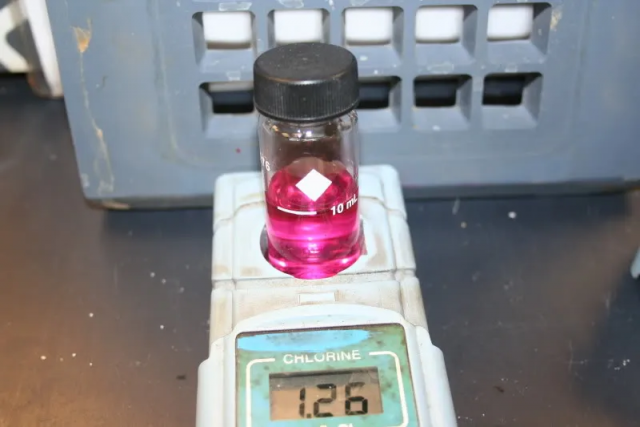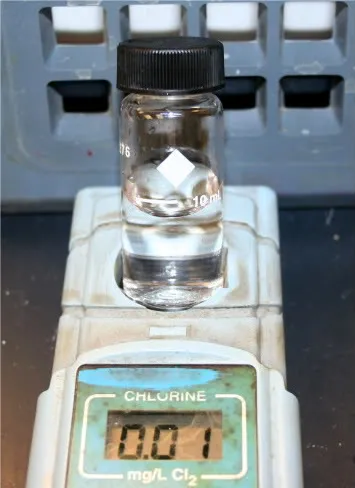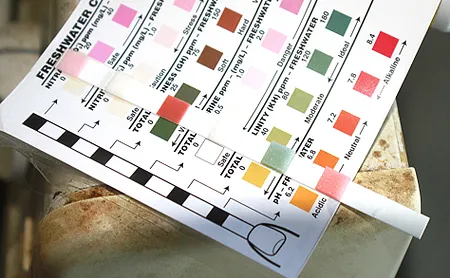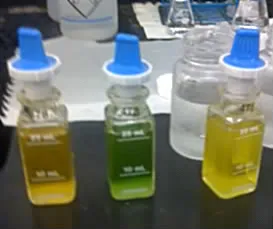We used a column of activated carbon to remove chlorine, and chloramine in the lab, for water that needed to be free of sodium-thiosulfate (our normal way of declorination) .
A slow stream would be run thru a 2 ft X 2 inch carbon filled tube, the slower the drip the longer the carbon would last (we used about 3 liters per day of the carbon filtered water,) .
The DPT chlorine detection test method regularly checked the efluent to determine the efficacy of the carbon, and usually ended up replacing used up carbon about once per month.
With the DPT method the darker pink the sample turns, the more chlorine present.

Above, before running thru carbon, below after

Below a swimming pool type test

For aquariums, the test strip is probably more practical because it also gives ballpark info on other parameters like pH, hardness, and nitrate.
A slow stream would be run thru a 2 ft X 2 inch carbon filled tube, the slower the drip the longer the carbon would last (we used about 3 liters per day of the carbon filtered water,) .
The DPT chlorine detection test method regularly checked the efluent to determine the efficacy of the carbon, and usually ended up replacing used up carbon about once per month.
With the DPT method the darker pink the sample turns, the more chlorine present.

Above, before running thru carbon, below after

Below a swimming pool type test

For aquariums, the test strip is probably more practical because it also gives ballpark info on other parameters like pH, hardness, and nitrate.













